RV Electricity: Power Cords, Plugs & Adapters
Welcome to the world of RV electricity! Some would consider power one of the most complicated aspects of owning a motorhome.
There are three main ways to power your RV: shore power (city power), generators, and solar power. In this post, we’re going to focus on shore power. If you want to learn more about generators and solar power, take a look at these articles:
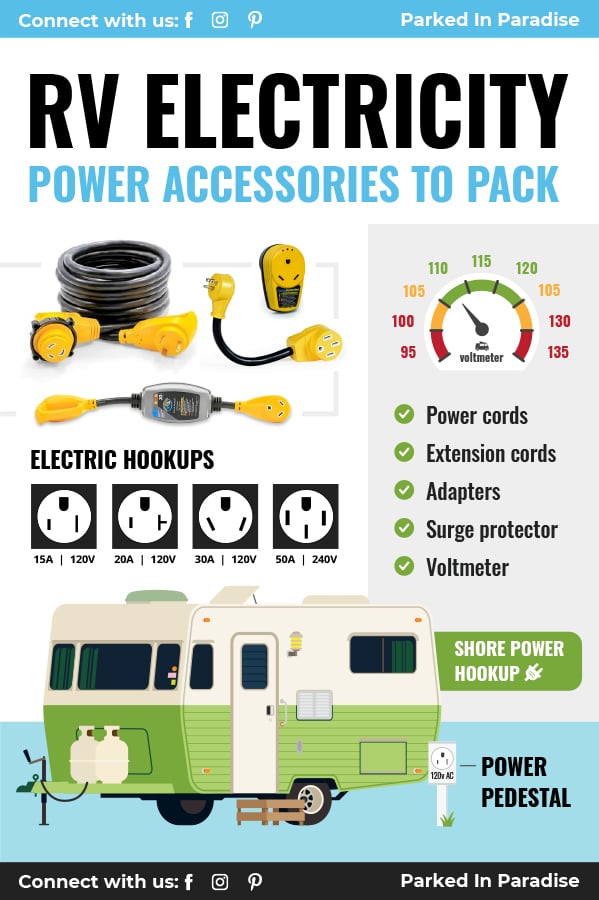
What is shore power?
In an RV, shore power means using the city power supply at a campground or RV park. You’ll often find power pedestals located next to an established campsite.
Electricity comes out of the power pedestal as 120v AC power – the same kind that’s in your house.
30 amp VS 50 amp RVs
Most RVs are sold with either 30A or 50A electric systems. Before you can hook up to the power pedestal, it’s important to know which kind you own.
- A 30 amp RV has one 30 amp, 120 volt electric circuit.
- It can handle a max of 3,600 Watts.
- A 50 amp RV has two separate 50 amp, 120 volt electric circuits.
- It can handle a max of 12,000 Watts.
The easiest way to find out what type of RV you own is to look at the power cords. A 30A cord has 3 prongs, and a 50A cord has 4 prongs.
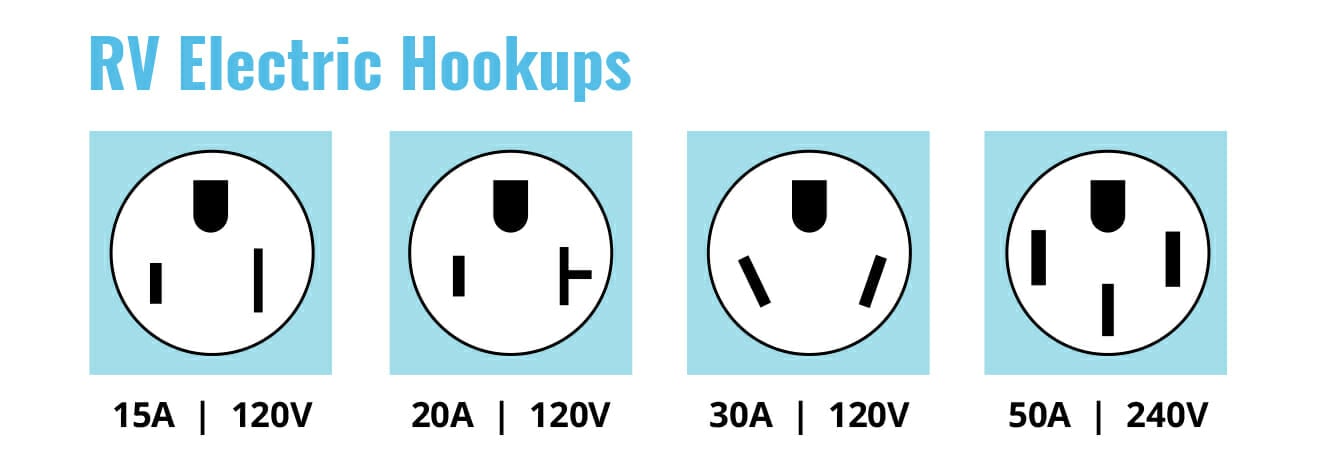
30A electric systems are more common in smaller RVs and travel trailers. It is typically enough power to run a single air conditioner, refrigerator, microwave, TV, and numerous small electronics like laptops, coffee makers and cell phones.
Larger motorhomes with 50A of power can supply two or more air conditioners, a washer and dryer, residential style refrigerator, dishwasher, entertainment center, and so on.
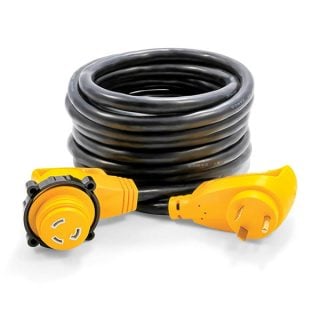
RV Power Cords and Extension Cords
An RV Power Cord is a heavy-duty extension cord (often called an RV extension cord).
The orange cord that you buy at a hardware store might fit the plugs with an adapter, but they’re not designed to carry the 30-50A that is needed for most RVs. They can heat up to the point of starting a fire if you try to use them!
Many RV power cords also come with lock rings that provide additional security in the connection. Note that a 50A cord costs significantly more simply because it’s using heavier wiring.
We recommend traveling with about 20-30ft of cable. Most of the time this will be plenty to reach your RV campsite from the power pedestal.
Dog Bone Adapters and Puck Adapters
Unfortunately, not all campgrounds come furnished with both 30A and 50A hookups. That means to plug into a power pedestal you’ll need the correct adapters.
The two main types of RV adapters are dog-bone adapters and puck adapters. Adapters only change the physical shape of the campsite plug to fit your RV. They do not alter the power output. Puck adapters are a little more finicky- they can heat up due to their size and connections aren’t always as secure. But they are smaller, making them easier to store and less expensive.
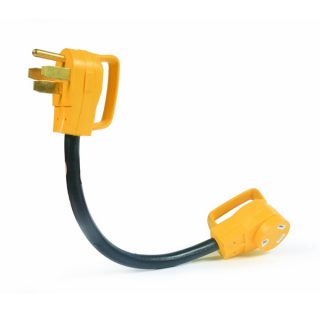
We recommend investing in a dog bone adapter if you have the storage space:
With a 30A to 50A adapter, you will still be limited by the 3,600-watt max capacity of your electric system (30A at 120V).
Similarly, by plugging a 50A RV into a 30A pedestal you’re also going to max out at 3,600 watts because that’s all the power it’s able to supply.
You can learn more about watts, amps, and volts in this post
If you need 12,000 watts of power to run your motorhome, you should call the campground ahead of time and make sure the site can supply a 50 amp power hookup.
Voltmeters, Analyzers and Surge Protectors
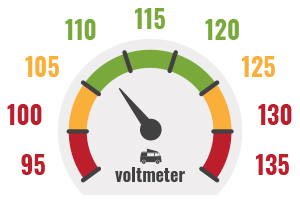
Every once in awhile campground wiring isn’t up to snuff, which can lead to power surges and cause damage to your camper. Additionally, when a lot of RVs are pulling power from the same pedestal you can end up with a ground-out. Low voltage can damage wiring and start fires, and grid surges can wreak havoc on your appliances.
Before plugging in, you’ll want to check the power pedestal voltage.
A circuit analyzer connects directly to a campground socket and lets you know if it is safe to plug your RV in. Many come with surge protection as well, which protects your RVs electronics from voltage spikes.
A voltage protector has all of the features of a circuit analyzer but also includes a voltage disconnect if the voltage drops too low. Low voltage can overheat your wires and damage your electrical devices.
A multimeter is a general electrical tool that everyone should have in their RV because they are key to diagnosing many electrical issues. In this case, if you don’t have the means to buy purpose-built electrical adapters, you can use your multimeter to quickly check the campground’s box for proper voltage. It won’t be a continuous reading like the other devices, but it can let you know if it’s initially safe to plugin.
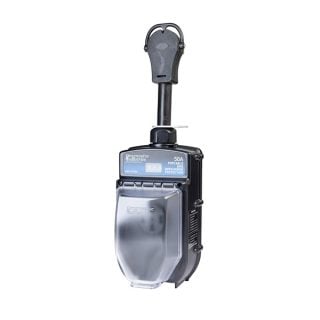
Surge protectors prevent voltage spikes. These are especially useful when protecting against improperly wired outlets or lightning strikes. RV surge protectors won’t tell you voltage, but they will prevent most electrical problems.
How Hookup Your RV
- Always start with the breaker switch on the power pedestal off
- If you have a voltmeter, check the power pedestal voltage
- Plugin the surge protector or voltage protector
- Connect the RV Power cord to the surge protector
- Connect the RV power cord to the RV
RV Extension Cord Maintenance
Keep the prongs of your power cords and other accessories clean using a wire brush. Corrosion increases resistance and the extra heat can lead to damage.
Wrapping it Up
Having the proper power cords and adapters is essential to a smooth road trip. You should travel with a gearbox containing a variety of accessories so you’re never caught off-guard.
Using shore power is the easiest way to get electricity to the RV. Alternatively, you can use solar panels and batteries when camping off-grid or a generator to supply power while staying at a campground without power.
Thank you for sharing detailed information about the adapter and plugs.